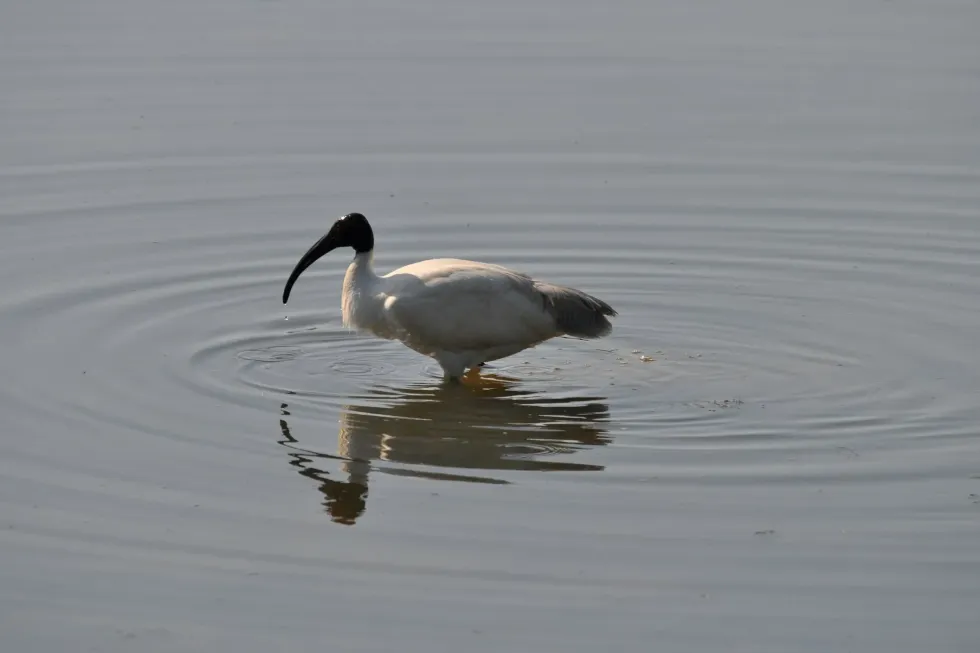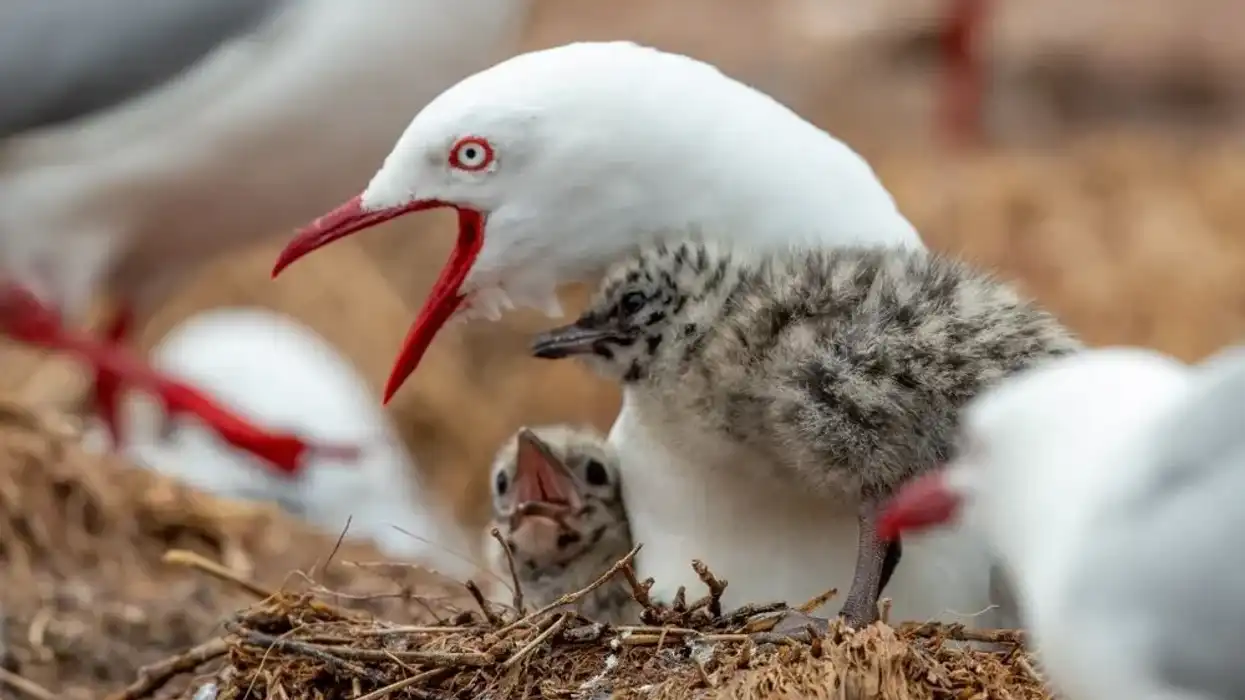Want your child to enhance their knowledge about animals and birds? You may introduce them to these beautiful avians. Hopefully, the color palette and the graceful stature of the avians will fascinate them and catch their attention!
Essentially a wetland species of wading birds, the black-headed ibis is also called the Oriental white ibis, the black-necked ibis, or the Indian white ibis. The bird is found in nature as well as in man-made habitats. It has adapted well to living in man-made habitats.
These waterbirds are found near both perennial and seasonal water holes. It is spread throughout the map of South Asia in the world from India in the west to Japan on the far side of the East. The bird is migratory by nature.
Like reading about these ibis species? Want to know more about these cute avians? Let's move further and dig in deep.
For more relatable content, check out these pelican facts and palm warbler facts for kids.
Black-Headed Ibis Interesting Facts
What type of animal is a black-headed ibis?
The black-headed ibis is a bird belonging to the Phylum Chordata, subphylum Vertebrata, superclass Tetrapoda, order Pelecaniformes, and species T.melanocephalus.
What class of animal does a black-headed ibis belong to?
The black-headed ibis belongs to the class Aves, that is, it is a bird.
How many black-headed ibis are there in the world?
There are only 10,000 to 19,999 mature individuals in the world. The population of the birds is decreasing. The population of the birds is distributed between South Asia and Southeast Asia almost evenly. Some are found in East Asia.
Where does a black-headed ibis live?
The black-headed ibis is found in wetlands, forests, grasslands, agricultural fields, dry fields, coastal areas, marshes, lakes, freshwater marshes, and salt-water marshes in the world. These areas have an abundant supply of fish and frogs which serve as food for the avian.
What is a black-headed ibis's habitat?
The black-headed ibis habitat is spread across the map in South Asia, Southeast Asia, and the Middle East. It is spread across the map in India, Nepal, Sri Lanka, Myanmar, Hong Kong, Japan, Thailand, and other south Asian countries where there is a lot of prey including fish and frogs.
Who do black-headed ibises live with?
The black-headed ibis Threskiornis usually stay alone or in small flocks or colonies in their habitat of marshy wetlands brimming to the full with yummy fish and frogs.
How long does a black-headed ibis live?
The average lifespan of the black-headed ibis is 10 years.
How do they reproduce?
The breeding depends on the water level in the area after the monsoon arrives. Sometimes, loud booming calls have been associated with the mating behavior of the avians. The females lay 2 eggs to 4 eggs in one clutch. The 2 or 4 eggs so laid are incubated for about three weeks.
The fledgling phase lasts for about 40 days. The birds tend to breed in breeding colonies. Sometimes the breeding colonies may be near to human settlements.
What is their conservation status?
According to the International Union for Conservation of Nature (IUCN) Red List of Threatened Species, the black-headed ibis is classified as Near Threatened.
Black-Headed Ibis Fun Facts
What do black-headed ibises look like?
The black-headed ibis, Threskiornis melanocephalus has a white plumage with a black head, a black neck, and long legs. The legs of the ibis are dark in color.
The beak of the bird is also dark and curved in a downward direction. The juveniles of the headed ibis are grayish in color and hence can be identified easily from the adults.
During the season of breeding the bare patches under the wings turn blood red in color. The tail feathers that are grey turn jet black in the breeding season. Thus the breeding pairs of the adults can be identified from the non-breeding ones.
The males and the females of this species are difficult to be identified. The wingspan of the black-headed ibis, Threskiornis melanocephalus is around 51 in (130 cm).

How cute are they?
The creatures are very cute. The black-headed ibis, Threskiornis melanocephalus have a pristine, fluffy white plumage. The juveniles of the black-headed, ibis Threskiornis melanocephalus too are adorable.
How do they communicate?
The creatures lack a true voice. The black-headed ibis, Threskiornis melanocephalus communicate through ventriloquistic grunts and croaks. It is uttered by pairs at the breeding sites. Except for these sounds, the creatures are usually silent. The juveniles of these wading birds in want of food make continuous rasping sounds.
How big is a black-headed ibis?
The black-headed ibis, Threskiornis melanocephalus is 25.5- 29.9 in (65-76 cm) in length. It is a large waterbird and bigger than a swan or a duck.
How fast can a black-headed ibis fly?
The black-necked ibis can moderately fast. When flying in flocks the black-headed ibis Threskiornis may fly in V formations or in single file.
How much does a black-headed ibis weigh?
The black-headed ibis clocks in a weight of 2.4-3.08 lb (1100-1400 g).
What are their male and female names of the species?
There are no different names for the males and the females of the species.
What would you call a baby black-headed ibis?
A baby black-headed ibis Threskiornis is called a fledgling or a chick.
What do they eat?
The black-headed ibis food includes frogs, worms, snails, tadpoles, larval insects, crustaceans, adult insects, and fish. The bird also feeds on aquatic vegetation.
Are they poisonous?
The black-headed ibis Threskiornis may not be poisonous, however, diseases like Salmonellosis may spread in humans through them.
Would they make a good pet?
The inland black-headed ibis Threskiornis is better left off in the wild environment. Since they are near threatened, it would be prudent not to take them as pets.
Did you know...
There a total of 28 extant species of the inland Ibis Indian. Also, there are six extinct species of the Ibis.
A group of the near-threatened black-headed ibis bird is called a congregation, stand, and wedge.
The black-headed ibis Threskiornis can feed in shallow waters with its black head submerged under the water for some time.
The black-headed ibis, Threskiornis melanocephalus is closely related to the T. bernieri, T. aethiopicus, and T. moluccus.
This subspecies of this inland avian is considered to be monotypic.
In the breeding colonies of these inland avians, predators like raptors and crows flock to prey on the young ones. Survival in the wild is a tough job for the chicks.
The black-headed ibis South Africa (African Sacred Ibis) and the black-headed ibis Australia (Australian white Ibis) are two wading birds with which the black-headed ibis Threskiornis forms a superspecies.
The naming of the species is attributed to Latham 1790 although there are some doubts. Over eighty species of birds have been mentioned in Latham 1790.
Are black-headed ibises endangered?
Hunting of the birds, agriculture, and destruction of the foraging habitats of the birds has affected them. They are classified as Near Threatened in status owing to a steady decline in population in the past few decades.
Conservation efforts around the marshy wetlands are underway to protect these birds. As part of the conservation efforts, many countries have placed the black-headed ibis, Threskiornis melanocephalus under the native acts to protect it. In India, the species is placed under 'Schedule IV' of the Indian Wildlife Protection Act (1972).
The population of birds in Sumatra has seen the most serious decline in recent times. This catastrophe can be attributed to the formation of fishponds from the mangroves in the area.
Also, the swamp forests were converted to meet the needs of the wood pulp industry in the area. All these collectively contributed to the destruction of habitat for the species.
The use of pesticides in agriculture is also affecting these avians. The collection of eggs is another contributing factor. Clearly destructive anthropogenic and agricultural activities are the biggest threat to the survival status of this species.
Though once found in Thailand they are a rare sight now. The avians may be seen in Thailand in the winter.
What is unique about the black-headed ibis?
The family Threskiornithidae which breeds only during the rainy season or the monsoon season builts nests in marshy wetlands strategically. The nests are built near marshy wetlands with sticks, branches, twigs, and grass. The black-headed ibis, Threskiornis melanocephalus is the only one in its native range with a pristine white plumage and black neck and head.
Here at Kidadl, we have carefully created lots of interesting family-friendly animal facts for everyone to discover! Learn more about some other birds from our sanderling facts and Arctic tern facts pages.
You can even occupy yourself at home by coloring in one of our free printable black-headed ibis coloring pages.









